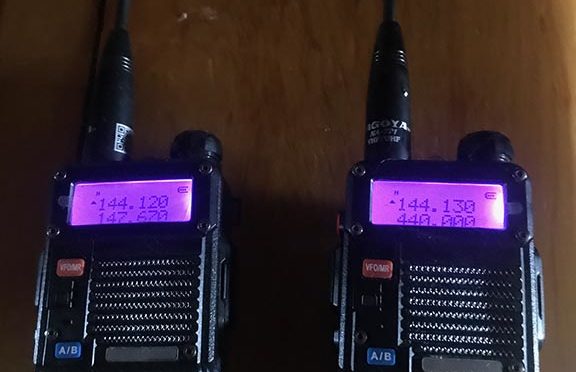by Mark Bunch
President Royal Gorge Gun Cub & Chairman Fremont County NRA
Once upon a time I traveled completely across the country coast to coast when I was only 17 years old. There wasn’t any cell phones back then, or MapQuest or MTV. Every couple of days I would call my (dearly departed) mother and let her know that I wasn’t in jail or dead or anything. Not sure how intelligent that feat was but I have a lot of great memories from that trip. The world wasn’t exactly a safe place even back then, however, I did have an 11 meter (CB) amateur radio in my car and my trusty Colt 1911 just in case I needed to call a fellow motorist for help or call for help for that fellow motorist or something…Smile… In that day, before CB radios were deregulated, they worked fairly well and it wasn’t uncommon to be able to transmit 20 plus miles from a base station and up to 10 miles for a mobile radio depending on terrain.
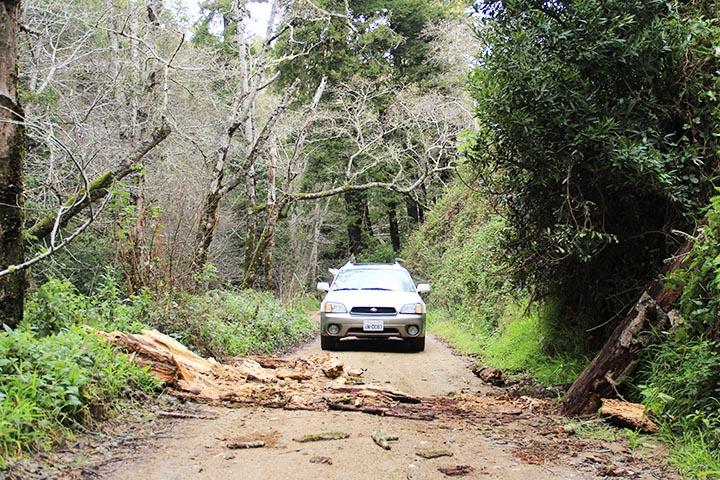
With the advent of cell phones, FM business radios and ham radios the appeal and use for CB radios has literally gone out the window along with their effectiveness. Cell phones are convenient and everyone seems to have one. However, in August of 2005, I was in Dodge City, KS on business when Hurricane Katrina hit land in New Orleans. For three straight days I was unable to make or receive calls on my cell phone and I was probably 1,000 to 1,200 miles away from the storm. With everyone trying to make calls at the same time. the cell phone system got overwhelmed and simply crashed in many locations! I am sure we have all heard that automated message “All circuits are busy please try your call again later.” What if you couldn’t make that call again later? What if you or your loved ones needed help right now and there wasn’t any cell service for any of a myriad of reasons.
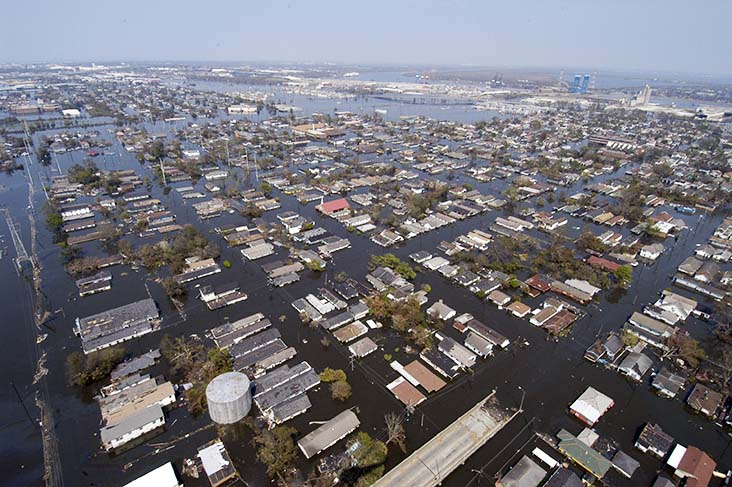
New Orleans (Sept. 2, 2005) – Four days after Hurricane Katrina made landfall on the Gulf Coast, many parts of New Orleans remain flooded. The Navy’s involvement in the humanitarian assistance operations is led by the Federal Emergency Management Agency (FEMA), in conjunction with the Department of Defense. U.S. Navy photo by Gary Nichols (RELEASED)
It was pretty eerie driving around rural Kansas for that entire week knowing that I had no means of communication in the event that something bad might happen where I was at. Shortly before this catastrophic event, the cell system had all been updated to an all-digital grid. Yes, I know all the mantra about new and improved things, but the old analog cell system would not have been affected whatsoever in Kansas by a hurricane in Louisiana. Kind of like Corn Flakes, they ‘new and improved’ them back in 1978, and I have never eaten any since, LOL.
Ham Radios for Survival
Once I returned from my business trip, I started researching ham radios. I was motivated to find a more reliable and alternative method to communicate when faced with an emergency or terrorist attack in case cell phone/land lines are not in service. I had always been somewhat familiar with the term since my father had been involved with amateur radio operation through the use of his base station which he built himself. He spent many hours reading and trying different tubes and things until he finally had a workable ham radio. Nowadays you can simply buy a great transceiver over the internet and never have to leave your house! My father held a technician class license which allowed him to talk on two-meter frequency as well as several others. I remember back then you had to know Morse code in order to get your amateur radio license and I spend many Sunday afternoons with my father learning Morse code. The term ham was originally meant to be derogative but somehow caught on and is a commonly used term to this day.
The first wireless operators were landline telegraphers who left their offices to go to sea or to man coastal stations. They brought with them their language and much of the tradition of their older profession. In those early days, every station occupied the whole spectrum with its broad spark signal. Government stations, ships, coastal stations and the increasingly numerous amateur operators all competed for time and signal supremacy in each other’s receivers. Many of the amateur stations were very powerful and as few as two amateurs, working together across town, could effectively jam all the communications in the same area. As one could imagine, this greatly frustrated commercial operators who would refer to this radio interference by calling them “hams.” Amateurs, possibly unfamiliar with the real meaning of the term, somehow picked up the moniker and applied it to themselves. Over the next hundred years or so, the original meaning has completely disappeared.
License Types/Frequencies
The Technician class license is the entry-level license of choice for most new ham radio operators. Earning the Technician license requires passing one examination totaling 35 questions on radio theory, regulations and operating practices. The license gives access to all amateur radio frequencies above 30 megahertz, allowing these licensees the ability to communicate locally and most often within North America. As a general rule most Technician class licensees choose to operate on the two-meter wavelength from 144-148 MHz depending on what ITU region you are located in. North America is in ITU region 2. This license also allows for some limited privileges on the HF (also called “short wave”) bands used for international communications.
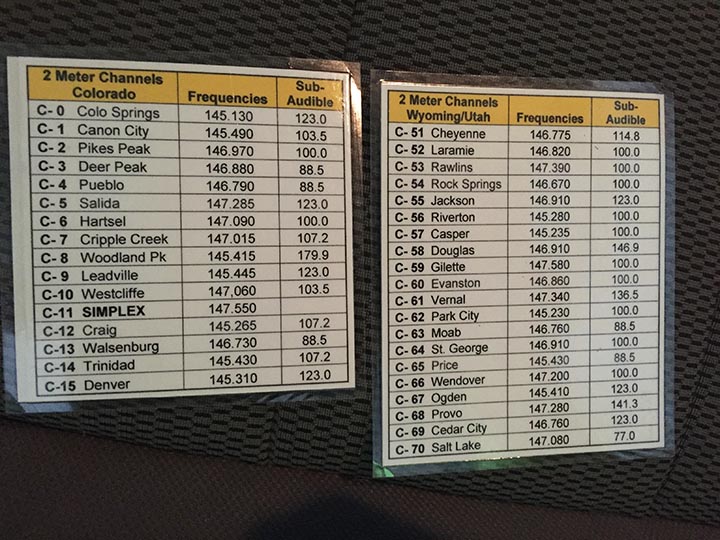
Two-meter ham radios primarily operate through repeaters and most all handheld and mobile two- meter radios today allow you to program in hundreds of channels into your radio. You transmit to a repeater and your signal is amplified and rebroadcast via a different frequency. This is referred to as half duplex communication. Most of these radios also work pretty well directly radio to radio without going through a repeater. This type of transmission is referred to as simplex. Range of simplex depends on the amount of power or wattage your radio has available for transmission. Most handhelds will be of the 5-watt variety and you can comfortably expect 5 to 10 miles under ideal circumstances and an occasional 20 miles depending on your line of sight. For example, if you were on a high ridge with open valley between you and whoever you are communicating with, I have seen 20 mile plus ranges on two-meter handheld simplex work very well.
Mobile two-meter ham radios can have much more transmitter power and my personal Yaesu mobile radios have 75 watts and transmit upwards of 60 miles simplex depending on terrain and line of sight. Of course having a quality antenna system is of paramount importance in extending your range. Your transmission range can be further increased by using a YAGI antenna, which is a directional antenna that focuses your transceiver in whatever direction you choose.
Technician class operators can also transmit on 33 and 70 centimeters, 6, 10, 15, 40 and 80 meter frequencies and they are limited to a maximum output of 200 watts PEP on HF bands. Maximum power for the two-meter band and any other band unless stated otherwise is 1500 watts Peak Envelope Power (PEP) however that is measured at the transmitter. You can then legally increase your transmission range power by adding an antenna that increases the overall db gain of your system. This is referred to as ERP or effective radiated power. I know a couple of operators who have 300,000 watts ERP systems on VHF.
General class ham licensure allows you to operate on all the frequencies listed above for Technician and also on 12, 17, 20, 30, 60 and 160 meter frequencies. General class licenses grant some operating privileges on all Amateur Radio bands and all operating modes. This license opens the door to world-wide communications. Earning the General class license requires passing a 35-question examination. General class licensees must also have passed the technician written examination. This is the license that I operate under and I occasionally talk to operators in South America and Europe.
The last and most difficult ham license to earn is the Extra class license as it conveys all available U.S. Amateur Radio operating privileges on all bands and all modes. Earning this license requires passing a thorough 50-question examination. Extra class licensees must also have passed all previous license class written examinations.
Several years ago, the ARRL relaxed the requirement of Morse code copy and transmission in order to boost interest in amateur/ham radio. Not that learning Morse code isn’t still a valuable tool to learn it just isn’t as critical as it once was. A great local resource right here in Cañon City is the local ham radio club which I believe meets the first Wednesday of every month. Our local club also operates our local repeater station which you will want to be able to punch into for increasing your two-meter transmission range. Generally you can find their display ad in the pages of the Crusader so be sure to look for it. (There is also a club in Custer County.)
Communications Plan Ham PLUS FM
It is my opinion that every reader of the Sentinel should acquire at least a Technician class license and a couple of two-meter ham radios just in case our everyday communications break down. I also recommend to readers to obtain some good quality FM packsets and maybe a mobile FM transceiver as well as a quality backup. Portable radios are pretty inexpensive and brands such as Yaesu, ICOM, Kenwood for two-meter, and Midland for FM and numerous others are available on Ebay for as little as $99. On two-meter they give you the ability to talk Simplex up to 10 plus miles depending on terrain and through a repeater frequency considerably further. My Midland 15-watt FM Mobile GMRS radio has the ability to transmit 50 miles under ideal circumstances and also works great with pretty much any FM packset. They aren’t quite as powerful as ham radios are, but they do work very well within their operating ranges. I have gotten as much as seven miles in broken mountainous terrain on my Midland FM packsets, so for close operations FM can be ideal, where you are wanting to limit who might hear your communications.
Adding mobile radios such as the Yaesu FT-2900R allow you to use up to 75 watts of power on the two-meter band and give you simplex communication up to 60 miles depending on your elevation and line of sight to other receiver/transmitters, and even further utilizing repeaters.
If you decide to go all in and add a quality base station from Kenwood, Yaesu, ICOM, Phillips etc, you should also pursue either a General class or Extra class amateur radio operator’s license. This will allow your family to transmit and communicate around the world which is not only extremely interesting and entertaining, but also very informative and can provide you with instant up to date information on critical events as they happen anywhere in the world. You can spend thousands of dollars on a base station if you wish, but a good quality 100-watt base station and a good antenna set up will allow you to talk around the world for somewhere between $800 and $2,000.
I also recommend programming your ham radios with all your local stations and those in surrounding states. One thing I did was to make myself front/back hand charts of the frequencies I have entered into my radios. Then I laminated them so they would hold up and I keep a set of these in my back packs, vehicles and ATVs. Your FM radios will already be programmed so all you have to do is turn them on and talk.
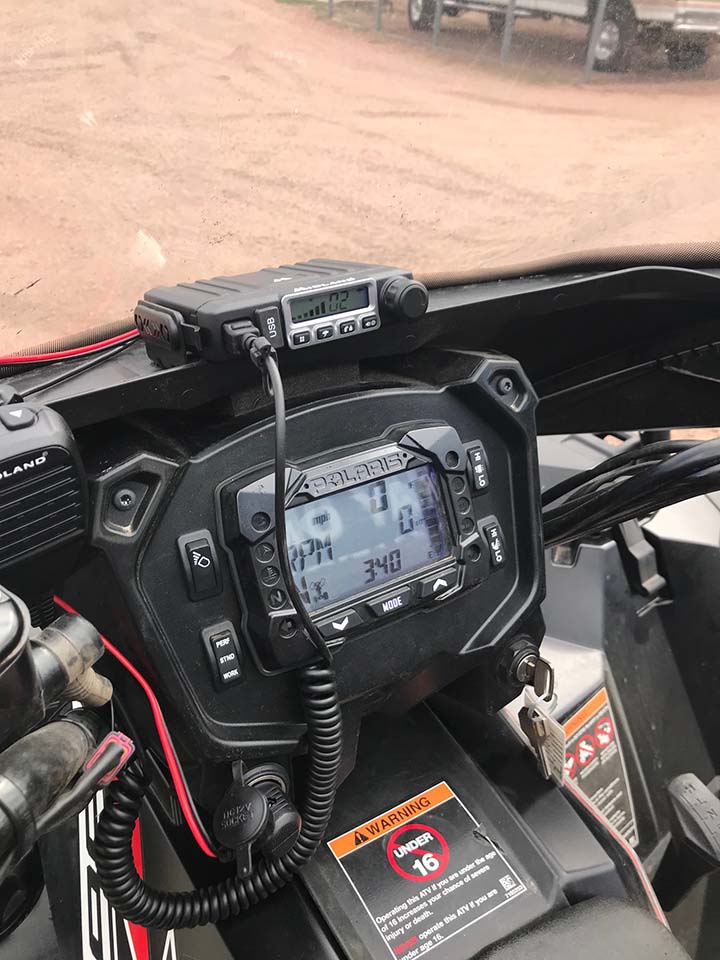
Emergency Communications
Once you have your two-meter and FM radios, you need to consider having a plan for your family and friends in case normal communication methods are interrupted or worse yet, terminated by an EMP or something even more sinister like left wing government overreach, (think Communist/Democrat policies). Before both of you Democrats reading this article swamp my email with complaints, under then Democrat President Bill Clinton, who was frustrated by on the scene reporting from numerous ham radio operators during the Waco and Ruby Ridge government siege operations against the Branch Davidians and the Randy Weaver family, he attempted to shut down amateur radio communications. You don’t have to work for NASA to figure out that he was trying to cover up what his scumbag Attorney General Janet Butch Reno, the FBI and the ATF were doing to U.S. Citizens under the guise of
National Security.
Whether you think those sanctioned government murders were justified or not, anytime your Government is not willing to trust you, you should return the favor and not trust your Government.
The only real difference between then and now is that the forces of darkness on the left have way more power than they did 25 years ago and despite being the alleged party of tolerance, they have absolutely zero tolerance for any of us on the right who still believe in freedom and our Constitution and Bill of Rights.
Radio code is pretty easy to come up with and some people I know have devised some pretty intricate codes for members of their family/group. I believe in keeping it as simple as possible with rotating channels on FM at pre-determined times to keep anyone trying to listen in on what you are doing or planning. For example, set your Incident time to the first emergency transmission, calling that Zero Mark. From there, set communication times at either 20 or 50 minutes while rotating channels per check in time. Avoid using 15, 30, 45 or 60 minute time intervals as human nature is to pay more attention to these time measurements so anybody attempting to listen in will be more attuned at those times.
Radio code with ham radio is going to have to be a little bit more involved due to the increased transmission ranges associated with these frequencies. I have always been a big believer in mis-communication so feel free to ad-lib and transmit erroneous information to the unsuspecting big brother. Without giving away any of my own personal Emergency Communications Plan, if you transmit everyone meet up at 11-mile reservoir at 1500 hours, what that really meant was to meet up 11 miles away from 11-mile reservoir at 0300 hours at a spot that had been predetermined by your group. Simple twists like that on your messaging can offer a layer of protection for your family and group without anyone being the wiser. Coded communications are not technically legal before SHTF so keep that in mind. Since I am not anybody’s mother, the police or the ham radio rules and regulations committee I am simply telling you your options that you will probably need should things go down the drain.
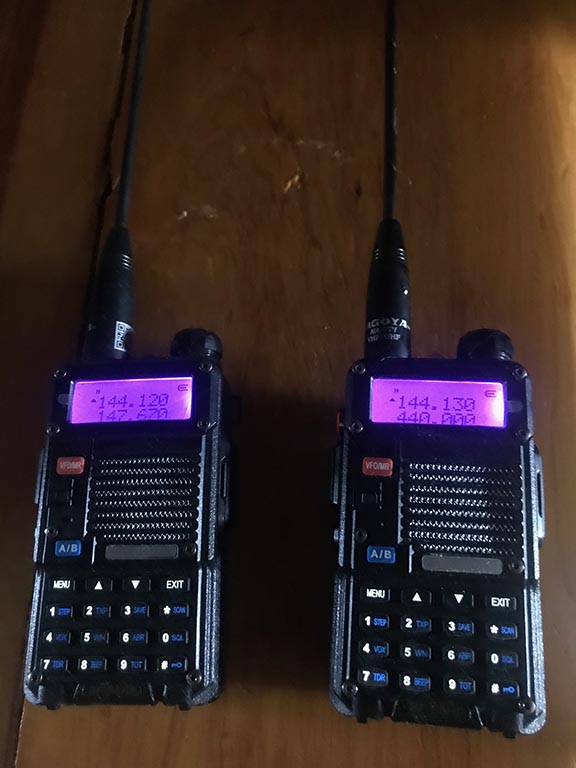
For those of you new to the concept of emergency radio communications, I encourage you to talk to friends and family members and discuss what your group communications needs might be and how to plan accordingly. Having the ability to communicate with people far away can allow your family/group to be able to thrive by having knowledge that can only be acquired by networking and communicating with others outside your immediate environment.
A good example for Sentinel readers is the made for TV movie series “Jericho” (2007) and can be found on Netflix or still ordered off of Ebay in DVD format. It details the aftermath of a limited Nuclear exchange that changed their lives forever in their isolated little Kansas town. I thought the series showed great examples of how the lack of communication methods and or prior planning can drastically impact and challenge your ability to make good decisions or prepare yourself to take on whatever might arise. A good communications plan can literally mean the difference between life and death, so the smart redneck should make the effort to do something about communications equipment while he/she still can.
(The author, Mark Bunch owns and operates a Gun & Pawn shop and 1 mile plus Gun Club with his business partner and gun club VP John Hudson in Canon City Colorado. Mark and John are both NRA certified firearms instructors in numerous weapons platform and class 3 dealers. Mark also holds a General Class ham radio operators license and can be reached on 2 meter and other bandwidths after 9 p.m. mountain time.)

